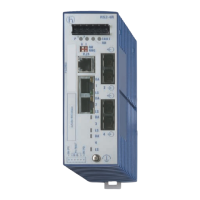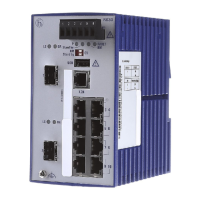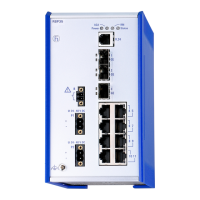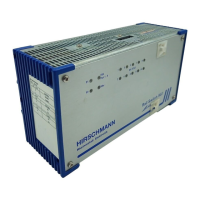Synchronizing the System Time in the
Network
Basic Configuration
Release
6.0
07/2010
7.3
Precision Time Protocol
109
X Peer-to-Peer (P2P)
With P2P, like in E2E, every slave clock measures the delay to its master
clock. In addition, in P2P every master clock measures the delay to the
slave clock. For example, if a redundant ring is interrupted, the slave clock
can become the master clock and the master clock can become the slave
clock. This switch in the synchronization direction takes place without any
loss of precision, as with P2P the delay in the other direction is already
known.
The cable delays are relatively constant. Changes occur very slowly.
IEEE 1588 takes this fact into account by regularly making measurements
and calculations.
IEEE 1588 eliminates the inaccuracy caused by delays and jitter by defining
boundary clocks. Boundary clocks are clocks integrated into devices. These
clocks are synchronized on the one side of the signal path, and on the other
side of the signal path they are used to synchronize the subsequent clocks
(ordinary clocks).
PTP version 2 also defines what are known as transparent clocks. A
transparent clock cannot itself be a reference clock, nor can it synchronize
itself with a reference clock. However, it corrects the PTP messages it
transmits by its own delay time and thus removes the jitter caused by the
transmission. When cascading multiple clocks in particular, you can use
transparent clocks to achieve greater time precision for the connected
terminal devices than with boundary clocks
Figure 29: Integration of a boundary clock
GPS
Reference
(Grandmaster Clock)
MasterSlave
Boundary Clock
Ordinary Clock
Ordinary Clock
Switch
PLC
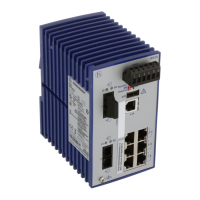
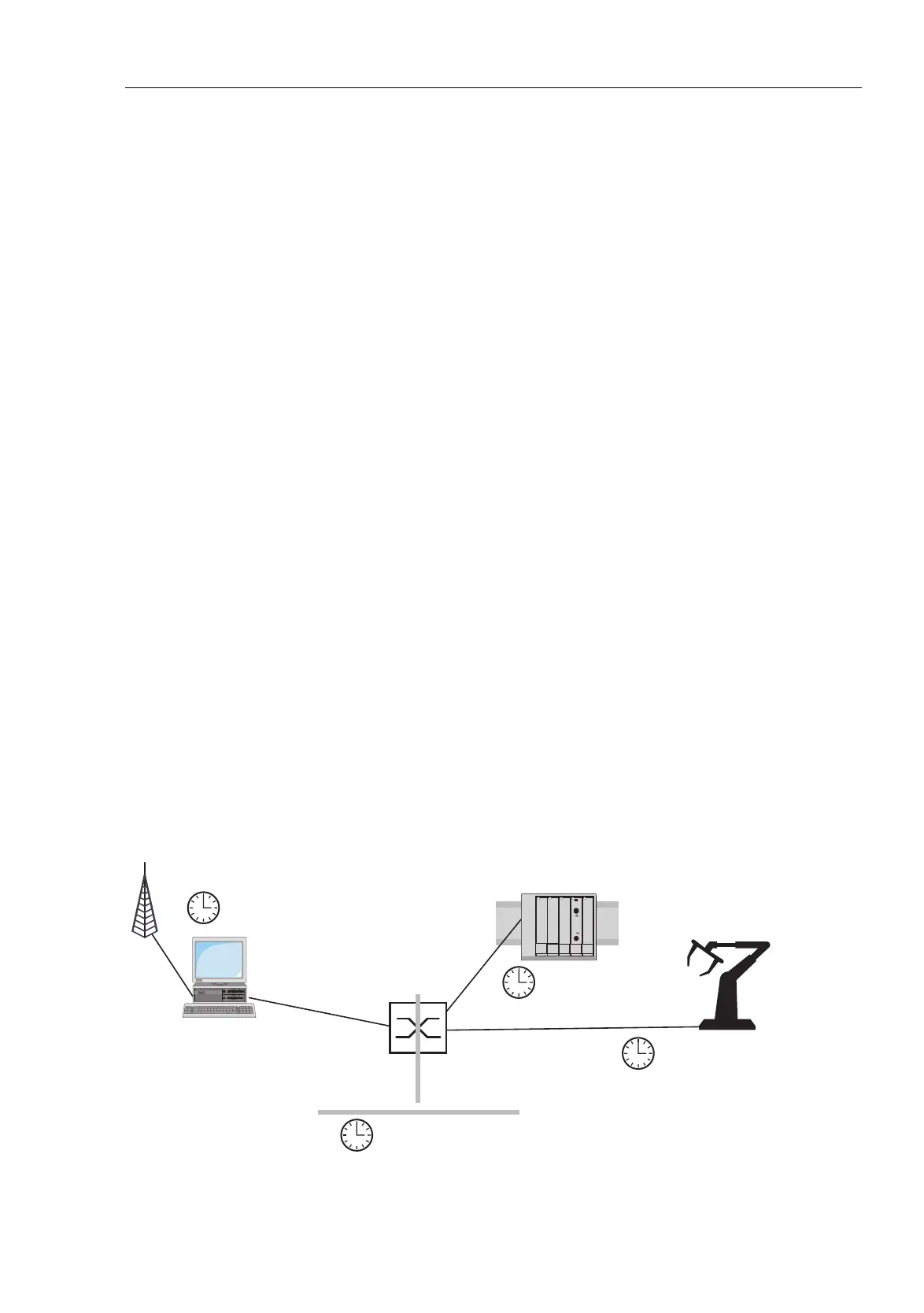